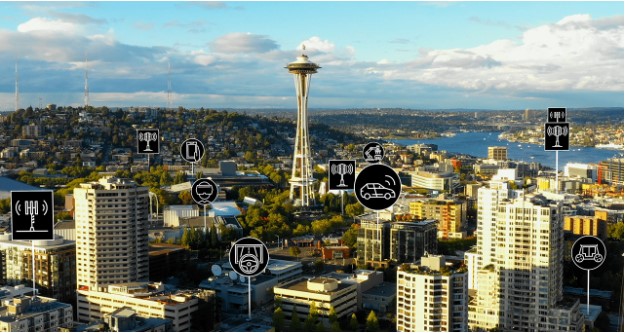통신 사업자들은 음성과 데이터 서비스를 넘어 AI 컴퓨팅 인프라를 통해 무선 네트워크를 최적화하고 모바일, 로봇, 자율주행차, 스마트 팩토리, 5G 등 차세대 AI 요구 사항을 충족하기 위해 혁신을 거듭하고 있다.

▲무선 네트워크 최적화 위한 ‘AI 에리얼’ 출시 / (이미지:엔비디아)
AI 기반 컴퓨팅 인프라 구축, 비용 절감으로 新수익 기회 창출
통신사에 고성능 소프트웨어 정의 RAN, 훈련, 추론 엑세스 제공
통신 사업자들은 음성과 데이터 서비스를 넘어 AI 컴퓨팅 인프라를 통해 무선 네트워크를 최적화하고 모바일, 로봇, 자율주행차, 스마트 팩토리, 5G 등 차세대 AI 요구 사항을 충족하기 위해 혁신을 거듭하고 있다.
엔비디아가 무선 네트워크를 최적화하고 단일 플랫폼에서 차세대 AI 경험을 제공하는 엔비디아 AI 에리얼(NVIDIA AI Aerial)을 20일 공개했다.
최근 출시된 엔비디아 AI 에리얼은 AI 시대의 무선 네트워크를 위한 AI-RAN(AI radio access network)을 설계, 시뮬레이션, 훈련, 배포하기 위한 가속 컴퓨팅 소프트웨어와 하드웨어 제품군이다.
다양한 신규 서비스의 수요를 충족하는 대규모 네트워크 최적화의 중요 기반으로써, 이를 통해 통신 사업자는 총소유비용을 절감하고 기업과 소비자 서비스를 위한 새로운 수익 기회를 창출할 수 있다.
엔비디아 AI 에리얼은 통신 서비스 제공업체들이 제조 로봇과 자율주행차를 위한 원격 작업을 할 수 있도록 지원한다. △제조 △농업 △물류 분야의 컴퓨터 비전 △생성형 AI 기반 코파일럿과 개인 비서 △새로운 공간 컴퓨팅 애플리케이션 △로봇 수술 △3D 협업 △5G와 6G 발전 등을 가능하게 한다.
엔비디아 AI 에리얼 생태계에 주요 파트너사로는 △소프트뱅크 △후지쯔가 있으며, 테스트와 시뮬레이션 시스템에 △앤시스 △키사이트가 있다. △딥시그 △취리히연방공과대학 △노스이스턴 대학교 △삼성과 같은 파트너와 학계에서는 6G 연구와 엔비디아 에리얼 AI 라디오 프레임워크에 협력하고 있다.
이외에도 △아르나 네트웍스 △ 캐노니컬 △레드햇 △윈드리버 △아커스 네트워크 △델 테크놀로지스 △휴렛팩커드 엔터프라이즈 △슈퍼마이크로 △베이퍼.io 등에서 생태계를 구성하고 있다.
■ 차세대 네트워크를 주도하는 AI-RAN
AI-RAN은 AI 기반 통신 기능을 활용하는 미래의 다목적 네트워크의 기반으로써, 엔비디아 AI 에리얼은 생성형 AI와 RAN 트래픽을 호스팅하고 네트워크 최적화에 AI를 통합할 수 있는 세계 최초의 AI-RAN 플랫폼이다.
AI-RAN은 고성능의 에너지 효율적인 소프트웨어 정의 RAN, 향상된 네트워크 경험, 내부 또는 타사 생성형 AI 애플리케이션 호스팅을 위한 엣지 AI 애플리케이션을 통해 새로운 수익 기회를 제공한다.
■ 통신 산업을 위한 엔비디아 AI 에리얼 활용
엔비디아 AI 에리얼 플랫폼은 고성능 소프트웨어 정의 RAN과 함께 훈련, 시뮬레이션, 추론을 포함한 전체 기능에 대한 액세스를 제공한다. 이를 통해 통신 사업자들은 차세대 무선 네트워크를 위한 개발부터 배포까지 모든 단계에서 참여할 수 있다.
엔비디아 에리얼 쿠다(CUDA) 가속 RAN에는 파트너들이 엔비디아 가속 컴퓨팅 플랫폼에서 고성능 가상 RAN 워크로드를 개발하고 배포할 수 있도록 지원하는 소프트웨어 라이브러리를 포함한다.
엔비디아 에리얼 AI 라디오 프레임워크에는 파이토치(PyTorch)와 텐서플로우(TensorFlow) 기반 소프트웨어 라이브러리가 포함된다. 이를 통해 스펙트럼 효율성을 개선하고 5G와 6G 무선 신호 처리에 새로운 기능을 추가하기 위한 모델을 개발하고 훈련할 수 있다. 신경망 기반 5G와 6G 무선 알고리즘의 개발과 훈련을 제공하는 링크 수준 시뮬레이터인 엔비디아 시오나(Sionna)가 포함된다.
엔비디아 에리얼 옴니버스 디지털 트윈(Aerial Omniverse Digital Twin, AODT)은 시스템 수준의 네트워크 디지털 트윈 개발 플랫폼이다. AODT를 사용하면 단일 기지국부터 도시 전체를 아우르는 다수의 기지국이 있는 포괄적인 네트워크까지 무선 시스템을 물리적으로 정확하게 시뮬레이션할 수 있다.
AODT는 실제 세계의 사실적인 지형과 물체 속성과 함께 소프트웨어 정의 RAN(에리얼 쿠다 가속 RAN)과 사용자 장비 시뮬레이터가 통합된다.
■ 엔비디아 AI 에리얼과 AI-RAN 혁신 센터
엔비디아는 △T모바일(T-Mobile) △에릭슨(Ericsson) △노키아(Nokia)와 협력해 AI-RAN 혁신 센터(AI-RAN Innovation Center)를 설립하고 AI-RAN의 상용화를 가속화하고 있다.
이 센터는 엔비디아 AI 에리얼 플랫폼의 핵심 기능을 활용할 예정이다. 이번 협력은 AI-RAN 개발을 통해 고객에게 혁신적인 네트워크 경험을 제공하고자 RAN과 AI 혁신을 더욱 긴밀히 결합하는 데 중점을 두고 있다.
노키아 모바일 네트워크 총괄 사장인 토미 우이토(Tommi Uitto)는 “AI-RAN은 통신 산업에 혁신을 가져올 것이며, AI-RAN 혁신 센터의 설립은 업계 협력을 촉진해 우리의 여정을 도울 것”이라면서, “통신과 AI 분야의 선도 기업을 한데 모아 네트워크에서 AI의 잠재력을 최대한 발휘해 성능을 개선하고, 비용을 절감하며, 고객을 위한 새로운 기회를 창출할 수 있다”고 말했다.
에릭슨 네트워크 사업 부문장 겸 수석 부사장인 프레드릭 제이들링(Fredrik Jejdling)은 “에릭슨은 통신 서비스 제공업체가 여러 플랫폼에서 실행되는 휴대용 RAN 소프트웨어를 배포할 수 있도록 AI-RAN 솔루션에 투자해 왔다”며, “현재 이러한 맥락에서 엔비디아 가속 컴퓨팅의 성능과 비용을 검토하고 있다”고 말했다.
